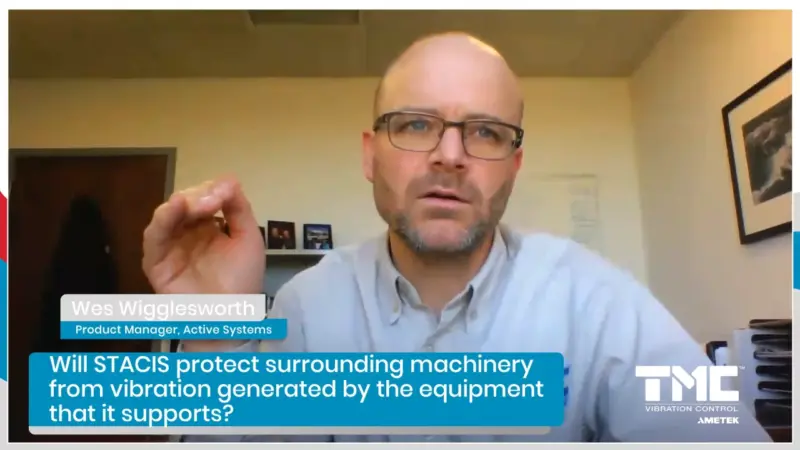Can STACIS Vibration Isolation Systems be Used in Vacuum Environments?
Mike Georgalis, North American Sales Manager at the Technical Manufacturing Corporation explains that STACIS vibration isolation systems can’t generally be used in vacuum environments, and a couple of good reasons why you would want to avoid deploying the system in a vacuum.
In the realm of vacuum environments, the deployment of STACIS systems faces notable challenges. Despite the fact that it’s feasible to thread electric cables through vacuum seals, which is a necessary step given the electro-mechanical nature of STACIS systems, this isn’t the most substantial hurdle.
Two more significant issues come into play. Firstly, the high voltages used to expand and attract the piezos in STACIS pose a risk for electrical arcing, due to the lack of a dielectric or resistance in vacuum environments. This lack of air around the system means that there’s an increased chance of arcing between areas of differing electric potential, which could lead to serious performance issues.
Secondly, components within STACIS systems, such as epoxies, rubber cables, wires, and dampening elements, are all potential sources of outgassing. When these materials are placed in a vacuum, the reduction of air pressure accelerates the outgassing process, which can compromise the sterility of the vacuum environment.
While STACIS systems were tested for outgassing in a vacuum, this was not done to test its compatibility with vacuum use. Instead, it was performed to understand the level of outgassing it could produce, given concerns about potential interference with clean room operations.
In essence, despite their utility in various settings, STACIS vibration isolation systems are not designed for use in vacuum environments. When considering system compatibility with vacuums, both the risk of electrical arcing and the likelihood of outgassing should be primary concerns. As such, alternative solutions need to be sought for these high-demand, sterile spaces.




